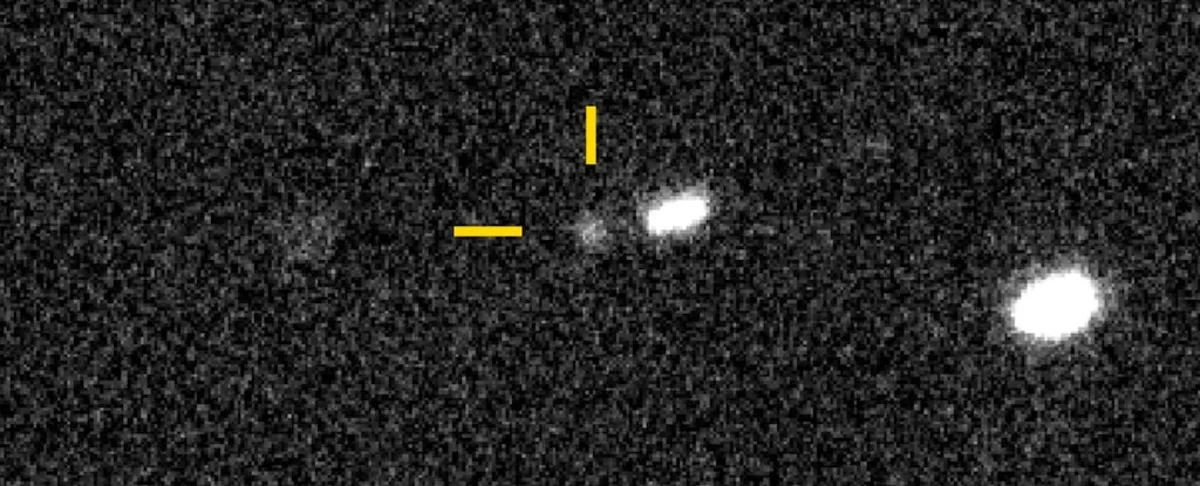
Astronomers confirmed on Wednesday the exciting discovery of an interstellar object racing through our Solar System. This remarkable find marks only the third instance of such an object being spotted, with scientists believing that many more may slip past unnoticed in the vast expanse of space. The object, designated as 3I/Atlas by the International Astronomical Union's Minor Planet Center, is likely the largest interstellar visitor detected to date and has been classified as a comet.
The apparent fuzziness of 3I/Atlas suggests that it is primarily composed of ice rather than rock. Jonathan McDowell, an astronomer at the Harvard-Smithsonian Center for Astrophysics, shared insights with AFP, emphasizing the icy nature of this celestial body. Initially known as A11pl3Z before its interstellar origin was confirmed, this object poses no threat to Earth, according to Richard Moissl, head of planetary defense at the European Space Agency.
3I/Atlas is set to fly deep through the Solar System, passing just inside the orbit of Mars without any risk of collision. Moissl indicated that the object is currently zooming through space at an impressive speed of over 60 kilometers (37 miles) per second. This high velocity further confirms that it is not bound by the Sun's orbit, distinguishing it from comets and asteroids that originate within our Solar System.
According to McDowell, these small icy bodies likely form in association with star systems. As other stars pass nearby, their gravitational influence can dislodge these icy objects, sending them on a rogue journey through the galaxy. 3I/Atlas is just one such visitor making its way past us.
The NASA-funded ATLAS survey based in Hawaii made the initial discovery of 3I/Atlas on Tuesday, as US astronomer David Rankin noted on the social media platform Bluesky. He managed to capture an image of the new interstellar object despite challenging weather conditions. Following the discovery, both professional and amateur astronomers worldwide began sifting through past telescope data to trace its trajectory, which dates back to at least June 14.
Current estimates suggest that 3I/Atlas measures between 10 to 20 kilometers wide, potentially making it the largest interstellar interloper ever detected. However, if its composition is primarily icy, it could appear smaller due to its reflective properties. The object is anticipated to become brighter and closer to the Sun until late October, remaining observable through telescopes until next year.
This discovery represents a significant milestone, marking the third time humanity has detected an object entering the Solar System from interstellar space. The first such object, 'Oumuamua, was discovered in 2017 and sparked debates about its origins, with some scientists even speculating it might be an alien vessel—a theory that has since been dismissed. The second interstellar visitor, 2I/Borisov, was spotted in 2019.
Mark Norris, an astronomer at the UK's University of Central Lancashire, highlighted that 3I/Atlas appears to be moving considerably faster than its predecessors. Currently, it is situated at a distance from Jupiter, although visibility is limited to the Southern Hemisphere for the time being. Norris pointed out that modeling suggests there could be as many as 10,000 interstellar objects drifting through our Solar System at any given moment, although most would be smaller than 3I/Atlas. This revelation indicates that the newly operational Vera C. Rubin Observatory in Chile may soon be discovering these elusive interstellar visitors on a monthly basis.
While sending a mission to intercept 3I/Atlas is not feasible, these interstellar visitors provide scientists with a rare opportunity to study materials from beyond our Solar System. Norris mentioned that detecting precursors of life, such as amino acids, on such objects could significantly bolster our confidence in the existence of life-supporting conditions in other star systems.
This extraordinary discovery of 3I/Atlas not only captivates astronomers but also opens new avenues for understanding the cosmic neighborhood around us.